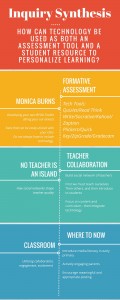Plickers are a great tool for formative assessment. Not only do they engage my students in learning, my students think it is a super fun game! I was frequently asked:
“Can we use those weird card things? You know, that we turn to answer questions and they have our numbers on them?”
I was able to use Plickers to assess my student’s understanding of different subject areas. A great feature is that you do not have to display student responses. While using Plickers, I turned off the display responses option but left the display of who had answered. My students thought this was a game, “Ms. Wynne, you missed R!” The students were very instrumental in making sure that I was able to record everyone’s response. No student felt as though they were on the spot though because it was Ms. Wynne who was not panning properly or too quickly. It also gave students who were not comfortable sharing, the opportunity to participate. I found that when asked a question, many of my students would look to one another for the answers. Using Plickers, encouraged students to think for themselves and gave me a better understanding of where they were at, as opposed to finding out how well they are able to peek at their neighbour’s response.
I also like that you, the teacher, are able to create the questions that you want to display. This allows teachers the ability to ask varied questions and tailor the questions to your particular students; a great personalized learning tool. I also found that throwing in a couple of ‘easy’ or ‘fun’ questions at the beginning and throughout engaged my students, kept them engaged, and encouraged them to answer all of the questions.
The only downfall to Plickers is the set up. It was more of a game for my students and elicited a lot of excitement, which I welcomed. But, I think with continued use and introducing them early in the year would make it more routine and enhance the assessment possibilities.

 be used as both an assessment tool and a student resource to personalize learning?eva walsh
be used as both an assessment tool and a student resource to personalize learning?eva walsh